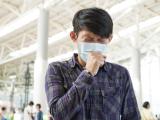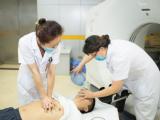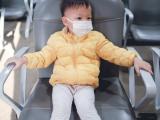May 5, 2003 (CIDRAP News) Laboratory studies have shown that the SARS (severe acute respiratory syndrome) coronavirus can survive up to 2 days on plastic surfaces and at least that long in human feces, the World Health Organization (WHO) has announced.
The studies, done by WHO network labs in Hong Kong, Japan, and Germany, also show that the virus can survive in urine for at least 24 hours, the WHO reported. Virus from the feces of patients suffering diarrhea, which is less acidic than normal stool, was found to survive for 4 days.
"However, the dose of virus needed to cause infection remains unknown," the WHO statement said. "Further studies are needed before firm conclusions about the role of faecal-oral transmission can be made. . . . Spread by infected [respiratory] droplets remains the most important mode of transmission."
The statement noted that a sewage leak may have played a role in the SARS outbreak in the Amoy Gardens apartment complex in Hong Kong, which featured a cluster of 320 simultaneous cases. About 66% of those patients had diarrhea, compared with 2% to 7% in other outbreaks.
The lab studies also show that common disinfectants, including bleach, ethanol, acetone, and formaldehyde, quickly kill the virus, according to the WHO. The findings affirm the importance of frequent handwashing, proper cleaning, and good infection control in hospitals with SARS patients, officials said.
Labs are studying the stability of the virus on other surfaces, and more results are expected this week, the WHO said. Previous reports have indicated that other members of the coronavirus family can survive on environmental surfaces for 3 hours. "WHO remains concerned that the SARS virus continues to be transmitted to hospital staff in highly advanced settings where sophisticated infection control measures are in place," the statement said.
WHO today reported 364 new probable SARS cases and 26 deaths since the last report on Saturday, May 3, bringing the cumulative total to 6,583 cases and 461 deaths. China has 160 new probable cases with 9 deaths, including 98 new cases and 3 deaths in Beijing. With a cumulative total of 4,280 cases, China now accounts for 65% of the global total, the agency said. Sixteen thousand Beijing residents remain quarantined.
As of May 4, the United States had 61 probable SARS cases, an increase of 7 since the previous report, according to the WHO tally. Taiwan, where officials have been concerned about a rapid increase in SARS cases in the past 2 weeks, has 16 new cases in today's report, for a cumulative total of 116 cases. The WHO announced May 3 that two of its officials had arrived in Taiwan that day to help combat the disease.
In other developments, studies at the Chinese University of Hong Kong indicate the presence of two distinct forms of the SARS virus in Hong Kong, according to an Associated Press report today. Researchers said they identified the two forms by genetic analysis of virus samples from 11 patients. One strain was identified in a woman whose case was linked to the outbreak that started at Hong Kong's Metropole Hotel, and the other strain came from a Hong Kong man who was believed to have contracted the illness in the mainland Chinese city of Shenzhen, the report said.
Dr. Dennis Lo, a chemical pathologist at the university, was quoted as saying that the virus "is undergoing rapid evolution in our population" but that more research is needed to assess whether the virus has become more infectious and dangerous.
The AP also reported that Hong Kong investigators are concerned that the virus may survive in patients for a month or more after their recovery. Dr. Joseph Sung, head of the department of medicine at the Chinese University, said the virus persists in patients' urine and stool for at least a month, according to the report.
However, Hong Kong officials have withdrawn their suggestion of last week that 12 former SARS patients had suffered relapses, according to the New York Times. A senior manager of the Hong Kong Hospital Authority said the apparent relapses turned out to be other illnesses, according to the report. He said all but four of the patients had again been discharged from hospitals.
See also:
WHO SARS page
http://www.who.int/csr/sars/en/



















